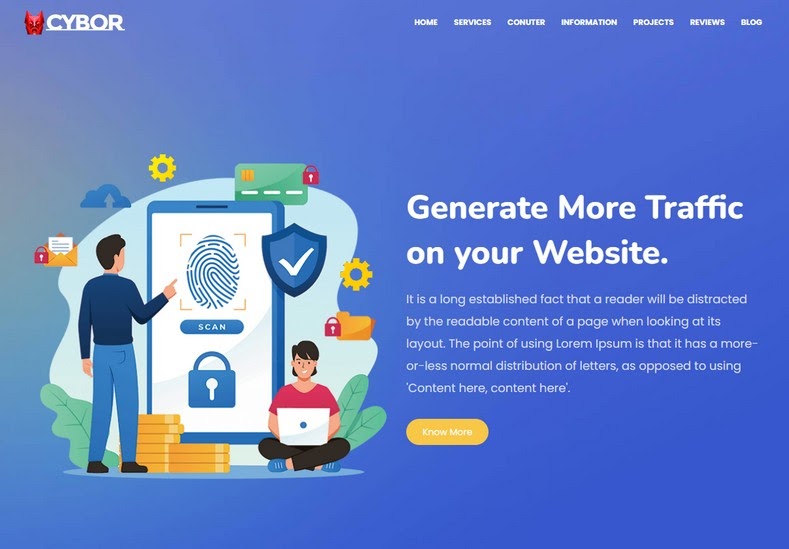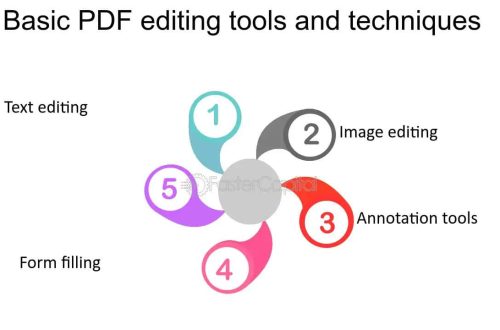The world of front-end development is constantly evolving, with new technologies and techniques always emerging.
Let’s look at some of the most exciting trends in front-end development, including the rise of web components, the growing importance of server-less architecture, and the increasing use of machine learning and artificial intelligence.
| The Future of Front-End Development, A Look at Emerging Front-End Development Trends: eAskme |
Web Components:
Web components are a set of standardized APIs that allow developers to make custom HTML elements.
These elements can be used in any web application and encapsulate all the functionality and styling needed for a specific component.
This means that developers can create reusable components that can be used across multiple projects, reducing development time and improving consistency.
One of the key benefits of web components is that they allow developers to create complex user interfaces more easily.
For example, a developer could create a custom tabbed interface with a dropdown menu, a search box, and other interactive elements.
This interface could be packaged as a web component and easily reused across multiple projects.
Another benefit of web components is that they can be easily maintained and updated.
Because the functionality and styling of a component are encapsulated within a single element, any changes made to it will automatically update all instances of that component across all projects.
Server-less Architecture:
Serverless architecture is a new approach to building web applications that use cloud-based functions instead of traditional servers.
In a server-less architecture, a front-end developer job would include writing code that runs in response to specific events, such as a user clicking a button or a data change in a database.
One of the key benefits of serverless architecture is that it can reduce costs and improve scalability.
Because cloud-based functions only run when needed, developers only pay for the resources they use.
This means server-less architecture can be much more cost-effective than traditional server-based architectures.
Another benefit of serverless architecture is that it can improve application performance.
Because cloud-based functions are distributed across multiple servers, they can be easily scaled as needed to handle spikes in traffic.
This means server-less applications can be more responsive and resilient than traditional server-based ones.
Machine Learning and Artificial Intelligence:
Machine learning and artificial intelligence are rapidly growing fields impacting front-end development.
Machine learning is training a computer to recognize patterns in data, while artificial intelligence involves creating systems that can do tasks that usually require human intelligence.
One of the exciting applications of machine learning and artificial intelligence in front-end development is user experience.
By analyzing user behavior and preferences, machine learning algorithms can personalize the user experience, providing tailored content and recommendations based on the user’s interests and preferences.
Another application of machine learning and artificial intelligence in front-end development is in the area of accessibility.
By analyzing user behavior and interaction patterns, machine learning algorithms can determine and fix accessibility issues in real-time, ensuring that all users can access and use the application.
Progressive Web Apps (PWA):
Progressive Web Apps are web applications that integrate the best of the web and native apps.
They provide users with an app-like experience that can be installed on their home screen without downloading and installing a traditional native app.
PWAs are accessible through a web browser and work offline, providing a fast, reliable, and engaging user experience.
They are built using modern web technologies, such as service workers and web app manifests, and are designed to be responsive and accessible across various devices.
Building a PWA can be more cost-effective than building a native app, as PWAs can be created using web technologies already familiar to front-end developers.
This can reduce development costs and make maintaining and updating the application easier.
WebAssembly (WASM):
WebAssembly is a new code that can be executed in web browsers.
It allows developers to write high-performance code in languages like C++ and Rust, which can be compiled to run in the browser.
This makes it possible to run complex applications, such as video games and simulations, directly in the browser, without plugins or other third-party software.
WebAssembly is becoming increasingly popular in front-end development, providing a new level of performance and flexibility for web applications.
WebVR/AR:
WebVR and WebAR are two emerging technologies that allow developers to create immersive virtual and augmented reality experiences that can be accessed directly in web browsers.
WebVR enables users to experience virtual reality using a headset, while WebAR allows users to experience augmented reality using a smartphone or tablet.
These technologies are becoming increasingly popular in front-end development, offering new opportunities for engaging and interactive user experiences.
In the past, virtual and augmented reality experiences required users to download and install specialized software, often on expensive and dedicated hardware.
This created a barrier to entry for many users, requiring a significant investment of time and money.
With WebVR/AR, however, users can access immersive experiences directly through their web browser without additional software or hardware.
This makes it easier for developers to create and distribute immersive experiences and for users to access them from various devices, including smartphones and tablets.
Micro front-ends:
Micro front-ends are a new architectural pattern for building front-end applications.
They involve breaking down a larger application into smaller, independent components with unique functionality and user interface.
These micro front-ends can be developed and deployed independently, allowing for greater agility and flexibility in front-end development.
They can also be reused across multiple projects, reducing development time and improving consistency.
Conclusion:
The future of front-end development is full of exciting possibilities.
From the rise of web components to the growing importance of server-less architecture and the increasing use of machine learning and artificial intelligence, many new technologies and techniques are transforming how we build web applications.
As a front-end developer, staying current with these emerging trends and learning new skills and techniques is important.
By doing so, you’ll be well-positioned to take advantage of the many opportunities the future of front-end development offers.
If you still have any question, do share via comments.
Don’t forget to share it with your friends and family.
Why?
Because, Sharing is Caring!
Don’t forget to like us FB and join the eAskme newsletter to stay tuned with us.
Other handpicked guides for you;




